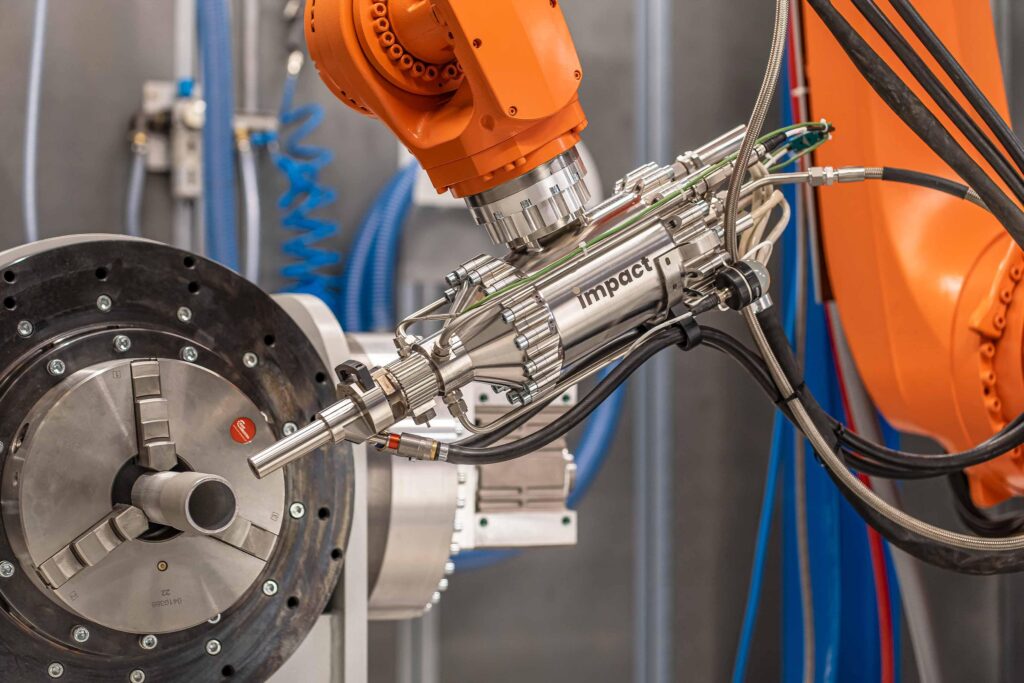Cold Spray Technology: Revolutionizing Parts Production for Efficiency and Affordability
In the dynamic realm of manufacturing, continuous innovation is key to enhancing efficiency and reducing costs, impacting a wide array of industries. One such groundbreaking advancement is cold spray technology—a state-of-the-art technique poised to redefine parts production, especially within the marine sector. By employing high-speed jets of material to apply coatings or fabricate complex components, this method is challenging conventional manufacturing practices. As the pressure mounts for quicker production cycles and lower expenses, cold spray technology stands out as a promising solution that boosts productivity while upholding stringent quality standards. This article delves into the workings of cold spray technology, its applications in marine manufacturing, and its potential implications for future parts production.
Transformative Uses of Cold Spray Technology in Marine Manufacturing
Cold spray technology is fundamentally changing how manufacturers in the marine industry produce and repair essential components. This innovative approach utilizes high-velocity impacts from metal powder particles to deposit materials without melting them. Consequently, manufacturers can achieve remarkable bonding strength and durability in their products. Some significant applications include:
- Corrosion Restoration: Effectively repairing hulls and components damaged by marine corrosion.
- Durable Coatings: Extending the lifespan of critical elements like propellers and shafts through protective layers.
- Lightweight Fabrication: Creating lighter structures from advanced materials that enhance fuel efficiency.
The advantages offered by cold spray extend beyond mere durability; they also lead to substantial reductions in both production time and costs—allowing manufacturers to streamline their operations effectively. By minimizing waste generation and avoiding energy-intensive melting processes, companies can significantly boost productivity levels. A recent analysis has revealed several compelling benefits associated with cold spray technology:
| Feature | Benefits |
|———————-|——————————————–|
| Cost Efficiency | Decreased material expenses due to less waste |
| Speed | Quicker turnaround times for production |
| Versatility | Applicable across various materials |
Optimizing Production Processes for Cost Savings and Speed
The adoption of cold spray technology within manufacturing workflows is transforming component fabrication by offering notable improvements in cost-effectiveness and speed. This cutting-edge method involves swiftly depositing powdered metals onto surfaces without relying on traditional welding techniques’ heat-based processes—resulting in stronger bonds with faster production timelines that minimize downtime.
Key benefits derived from implementing this innovative approach include:
- Lower Material Waste: Cold spray methods utilize significantly less material than conventional techniques, leading to reduced overall costs.
- Enhanced Material Properties: The low-temperature application preserves mechanical characteristics resulting in improved durability.
- Accelerated Prototyping: Designers can rapidly create parts for testing purposes which facilitates quicker iterations during project development.
Moreover, this technique proves particularly beneficial for sectors requiring precision engineering such as maritime applications where complex geometries must be produced efficiently while minimizing impact on surrounding areas.
To illustrate how cold spray compares against traditional methods regarding efficiency:
| Method | Production Time | Material Waste | Cost Effectiveness |
|———————–|——————|—————–|———————|
| Traditional Welding | Longer | Higher | Higher |
| Cold Spray Technology | Shorter | Lower | Lower |
Enhancing Performance Characteristics of Marine Components
The unique challenges faced by the marine industry necessitate robust components capable of enduring harsh conditions; here lies where cold spray technology shines as a transformative force enabling enhancements through controlled deposition processes. Utilizing high-speed particle impacts allows effective application of metal coatings that bolster wear resistance alongside fatigue strength—critical attributes needed when dealing with demanding maritime environments.
Noteworthy advantages include:
- Superior Adhesion: The process fosters exceptional bonding between different materials ensuring longevity under maritime conditions.
- Rapid Manufacturing Times: Cold spraying reduces overall timeframes allowing swift delivery on vital components.
- Economic Viability: By curtailing material wastage along with energy consumption requirements compared to traditional approaches makes it an economically sound choice.
Additionally, the adaptability inherent within cold spray technologies permits usage across diverse materials facilitating customized solutions tailored specifically towards various marine needs.
Here’s a comparison showcasing performance improvements seen across different treated marine components versus those produced via standard methods:
| Component | Enhanced Property | Benefit from Cold Spray |
|———————-|————————-|——————————|
| Propellers | Corrosion Resistance | Increased lifespan |
| Hull Plates | Fatigue Strength | Reduced maintenance expenses |
| Pipes | Wear Resistance | Improved fluid dynamics |
Conclusion
As we navigate towards an advanced future within manufacturing realms like shipbuilding, Cold Spray Technology emerges at the forefront heralding significant changes poised to reshape parts fabrication methodologies throughout industries including maritime sectors alike! With capabilities enabling rapid yet cost-effective creation alongside repair solutions—the versatility showcased underscores its potential impact on operational efficiencies moving forward!
In today’s fast-paced environment where quality remains paramount alongside economic considerations—embracing innovations such as these becomes crucial! As research continues unveiling new possibilities ahead—the transformation awaiting our industry could redefine benchmarks concerning speediness & affordability!
As we set sail into uncharted waters filled with opportunities—it’s evident embracing advancements will be vital! The tides beckon us toward innovation; let us embark upon this journey equipped not only curiosity but courage too! In an ever-evolving landscape characterized by technological progressions—Cold Spray represents more than just another method—it serves as catalyst paving pathways toward sustainable vessels designed fit-for-future voyages ahead!
